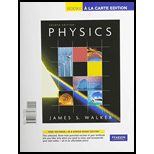
Concept explainers
Balance the following equations:
(a)
(b)
(c)
(a)
Interpretation:
The given chemical equation should be balanced.
Concept introduction:
The chemical reaction is said to be balanced if there are same number of constituent atoms are present on both sides of the reaction arrow. A balanced chemical reaction satisfies the law of conservation of mass.
Answer to Problem 47QAP
Explanation of Solution
The given chemical reaction is as follows:
The number of Ca and C atom are already balanced in the given reaction. The number of oxygen atoms on the left side of the reaction arrow is 1 and that on the right hand side of the reaction arrow is 2.
Similarly, the number of hydrogen atoms on the left side of the reaction arrow is 2 and that of the oxygen atoms is 4.
Thus, give coefficient 2 to
Thus, the balanced chemical reaction will be:
(b)
Interpretation:
The given chemical equation should be balanced.
Concept introduction:
The chemical reaction is said to be balanced if there are same number of constituent atoms are present on both sides of the reaction arrow. A balanced chemical reaction satisfies the law of conservation of mass.
Answer to Problem 47QAP
Explanation of Solution
The given chemical reaction is as follows:
The number of N and Cr atom is already balanced. The number of hydrogen atoms on the left side of the reaction arrow is 8 and that on the right hand side is 2 thus, give coefficient 4 to
Now, number of oxygen atoms on left hand side is 7 and that on the right hand side is also 7. Therefore, the balanced chemical reaction will be:
(c)
Interpretation:
The given chemical equation should be balanced.
Concept introduction:
The chemical reaction is said to be balanced if there are same number of constituent atoms are present on both sides of the reaction arrow. A balanced chemical reaction satisfies the law of conservation of mass.
Answer to Problem 47QAP
Explanation of Solution
The given chemical reaction is as follows:
The number of nitrogen atom on left hand side is 1 and that on the right hand side is 2, give coefficient 2 to
Now, number of carbon atom on left side is 2 and that on the right hand side is 1 thus, give coefficient 2 to
The number of hydrogen atom on the left hand side is 10 and that on the right hand side is 2 thus, give coefficient 5 to
The number of oxygen atom on left hand side is 2 and that on the right hand side is 9. To balance the oxygen atoms, give coefficient 9/2 to oxygen gas on the left hand side.
Or,
Thus, the balanced chemical reaction is as follows:
Want to see more full solutions like this?
Chapter 3 Solutions
Student Solutions Manual For Masterton/hurley's Chemistry: Principles And Reactions, 8th
- Write all of Me Possible Products For each Of the Following reactions. In each case identity all pains of enantiomers, all digsterzoners and all Meso compounds 9. 11-60 11-0-11 V-G Η Η H ~ C-11 +HB+ - 1 H b. पन्ना 171-0-11 H-C-H Н C-C=c-call +HBr Perendez ==arrow_forwardHow can i draw the mechanisms for this molecule?arrow_forwarda. Discuss and explain he difference IN Stability between the Chai and Boat Гольцу от судомехане b. For the Following Molecule draw both possible Clain conformations and explain which one is more stable and for what Reason. H. CH₂ CH₂ H "Harrow_forward
- Please provide the mechanism for this reacitonarrow_forwardQuestion 5: Name the following compound in two ways using side chain and using prefix amine (Common name and IUPAC name both) CH3NH2 CH3CH2NHCH3 CH₂CH₂N(CH3)2 Draw the structure of diethyl methyl amine Question 6. Write the balanced combustion reaction for: a. Hexane b. Propyne c. 2-pentene Question 7: Write the following electrophilic substitution reactions of benzene: Hint: Use notes if you get confused a. Halogenation reaction: b. Nitration reaction : c. Sulphonation reaction: d. Alkylation reaction: e. Aceylation reaction:arrow_forwardQuestion 4. Name the following structures ○ CH3-C-N-H H CH3CH2-C-N-H H CH3CH2-C-N-CH3 Harrow_forward
 Chemistry: Principles and PracticeChemistryISBN:9780534420123Author:Daniel L. Reger, Scott R. Goode, David W. Ball, Edward MercerPublisher:Cengage Learning
Chemistry: Principles and PracticeChemistryISBN:9780534420123Author:Daniel L. Reger, Scott R. Goode, David W. Ball, Edward MercerPublisher:Cengage Learning General Chemistry - Standalone book (MindTap Cour...ChemistryISBN:9781305580343Author:Steven D. Gammon, Ebbing, Darrell Ebbing, Steven D., Darrell; Gammon, Darrell Ebbing; Steven D. Gammon, Darrell D.; Gammon, Ebbing; Steven D. Gammon; DarrellPublisher:Cengage Learning
General Chemistry - Standalone book (MindTap Cour...ChemistryISBN:9781305580343Author:Steven D. Gammon, Ebbing, Darrell Ebbing, Steven D., Darrell; Gammon, Darrell Ebbing; Steven D. Gammon, Darrell D.; Gammon, Ebbing; Steven D. Gammon; DarrellPublisher:Cengage Learning Chemistry: Principles and ReactionsChemistryISBN:9781305079373Author:William L. Masterton, Cecile N. HurleyPublisher:Cengage Learning
Chemistry: Principles and ReactionsChemistryISBN:9781305079373Author:William L. Masterton, Cecile N. HurleyPublisher:Cengage Learning Chemistry: The Molecular ScienceChemistryISBN:9781285199047Author:John W. Moore, Conrad L. StanitskiPublisher:Cengage Learning
Chemistry: The Molecular ScienceChemistryISBN:9781285199047Author:John W. Moore, Conrad L. StanitskiPublisher:Cengage Learning Chemistry for Engineering StudentsChemistryISBN:9781337398909Author:Lawrence S. Brown, Tom HolmePublisher:Cengage Learning
Chemistry for Engineering StudentsChemistryISBN:9781337398909Author:Lawrence S. Brown, Tom HolmePublisher:Cengage Learning Chemistry & Chemical ReactivityChemistryISBN:9781337399074Author:John C. Kotz, Paul M. Treichel, John Townsend, David TreichelPublisher:Cengage Learning
Chemistry & Chemical ReactivityChemistryISBN:9781337399074Author:John C. Kotz, Paul M. Treichel, John Townsend, David TreichelPublisher:Cengage Learning





